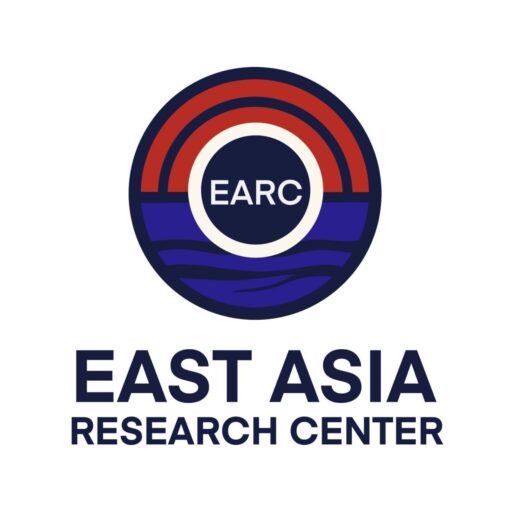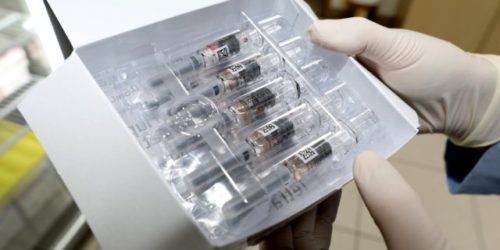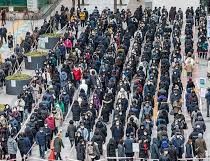A Tale of Two Models: Taiwan and South Korea in the Handling of the Coronavirus Pandemic
2020-4-5, Tara O
As SARS-CoV-2, the coronavirus originating from Wuhan, spreads throughout the world, press reporting highlights some Asian countries as models for handling the coronavirus situation. Numerous western reports have praised South Korea as a model, while some others praise Taiwan, Singapore, and Hong Kong. Some lump them all together, although their approaches vary. Taiwan, Singapore, and Hong Kong all restricted entry from China early on, contrary to World Health Organization (WHO) recommendations, and currently have relatively low numbers of coronavirus cases and deaths. South Korea took a different approach of continuing to allow entry from China, and has a much higher number of coronavirus cases and deaths. There are also other differences, such as in the way they dealt with mask shortages. As of April 4, 2020, South Korea has 10,156 confirmed COVID-19 cases and 177 deaths, while Taiwan has 355 cases and 5 deaths. Which policies should become a part of lessons learned for other countries? What does the data really suggest?
This report reviews SARS-CoV-2 data from the UN Office for the Coordination of Humanitarian Affairs (OCHA). Specifically, it reviews the data on the number of people infected as well as deaths from the coronavirus from January 22, 2020 to April 4, 2020 in Taiwan and South Korea. South Korea’s population is slightly more than twice that of Taiwan.
Population (2020):
- Taiwan: 23.8 million (46.45% of South Korea’s)
- South Korea: 51.3 million (215% of Taiwan’s)
This report does not focus on the hard work of the healthcare providers on the front lines doing their best to fight the coronavirus. It mainly reviews the data and highlights key policy differences.
- Total Confirmed Cases of the SARS-CoV-2 Infection (Figure 1)
As of January 22, 2020, both countries had 1 confirmed case of the coronavirus each. In mid to late February, however, the cases in South Korea increased exponentially, until early/mid March, after which, the growth slowed relatively, although it continued increasing. As of April 4, 2020, total confirmed cases are:
- Taiwan: 355
- South Korea: 10,156
If South Korea followed the Taiwanese model, adjusting for population size and holding all other variables constant, it should have just 763 cases (355 x 2.15). Conversely, if Taiwan had adopted South Korea’s model, Taiwan could have had 4,717 cases (10,156 x 0.4645).
Note: The Taiwan model equivalent number and the South Korean model equivalent number are provided for comparison purposes only.
- Total Deaths from the SARS-CoV-2 infection (Figure 2)
Taiwan’s first death from coronavirus occurred on February 16, 2020; for South Korea, it was on February 20, 2020. The number of deaths from the coronavirus infection remained low in South Korea until late February 2020, when the death toll in South Korea rose rapidly. As of April 4, 2020, total coronavirus deaths are:
- Taiwan: 5
- South Korea: 177
Again, taking into account the population ratio, if South Korea followed the Taiwanese model, the equivalent would be 11 (5 x 2.15) deaths in South Korea, and if Taiwan followed South Korea’s model, the equivalent would be 82 deaths (177 x 46.45%).
- SARS-CoV-2 Cases per Million (Figure 3)
Another useful way of comparing how well both countries managed this pandemic is to compare cases per million people. As of April 4, 2020, cases per million are:
- Taiwan: 14.91
- South Korea: 198.09
- SARS-CoV-2 Deaths per Million (Figure 4)
As of April 4, 2020, deaths per million are:
- Taiwan: 0.2099 (6% of South Korea’s death per million)
- South Korea: 3.4524 (1,645% of Taiwan’s death per million)
Taiwan’s death per million is 0.2, which is low and its growth curve is relatively flat, while South Korea’s deaths per million is 3.5 and its curve is increasing at a much faster rate than that of Taiwan’s.
- Different Outcomes between Taiwan and South Korea
The graphs show relatively flat curves and much lower numbers for Taiwan. South Korea’s curves separate from Taiwan’s at a much greater rate. What explains the difference?
Restrict/ban travel from China
Taiwan recognized the threat early on and rapidly began to take measures. It inspected and screened travelers from Wuhan, the epicenter of the SARS CoV-2, as early as December 31, 2019. It also actively monitored travelers from Wuhan who had already entered Taiwan on December 20, 2019 and onwards. It had developed screening, testing, and quarantine protocols early based on lessons from the SARS 2003 outbreak. It also engaged in aggressive contact tracing to ensure everyone that came into contact with an infected person was quarantined and tested. On February 6, 2020, Taiwan banned travel from China.
Unlike Taiwan, South Korea never banned travel from China, although the Korean Medical Association (KMA) and the public called for such measures multiple times. South Korea eventually restricted travel from Wuhan on February 2, 2020, but it was not until after China had already quarantined the City of Wuhan on January 23, 2020. KMA, on February 3, made its fifth request to the government to ban entry from China, saying South Korea is losing its “golden time” of prevention, and it will become “regional spreads.” KMA also highlighted inadequate tracking of visitors from China. KMA’s concerns and the government’s inadequate tracing are not reflected in foreign reports that praise South Korea’s tracing.
On January 31, 2020, 11,345 people traveled from China to South Korea. Multiplying by 30 days, that would be more than 340,350 people in one month. If 1% were infected with the coronavirus, that would be 3,403 infected people entering South Korea.
Masks
Another difference is that Taiwan banned mask exports to China and elsewhere early on January 24, 2020, stating it needs to take care of its people first. It established a system in which its citizens are provided with adequate masks, and at a low cost of 17 cents per mask. As Taiwan began producing more masks, it is even donating 10 million face masks in April 2020.
On the other hand, South Korea donated millions of masks to China in late January 2020 and continued to export millions of masks to China, while South Korean citizens and health care providers suffered from mask shortages. For details on mask shortages, see here.
Coronavirus Testing
In early February, patients #16 and #18 were seen at 21st Century Hospital in South Korea. The hospital was surprised to discover that the government gave over half the 70 healthcare workers negative test results for the coronavirus, although they did not even test for it. Of these, some of them came in contact with coronavirus patients and they did not even wear protective gear.
The testing in earnest really began when the government began testing the members of Shincheonji sect in Daegu. The South Korean government focused testing on Shincheonji members, making the test free for them and giving them priority for testing. In South Korea, the testing costs ₩160,000. (In Taiwan, the testing is free.) Some South Korean citizens who were sick with coronavirus symptoms in the Daegu region and other parts of the country, however, were discouraged or turned away from testing. The testing of Shincheonji members in Daegu began in earnest on February 26, 2020 and ended on March 12, 2020. The graph (Figure 1) shows this period to be the steepest part of the curve, which makes sense since this is the time when the testing numbers were the highest.
The “aggressive testing” often mentioned in the western press refers to this period of testing the Shincheonji members in Daegu City. Recently, the South Korean government changed its testing guidelines, so that a sick person needs to have a CT Scan or an X-ray before a coronavirus test can be administered. This has the effect of reducing the number of tests South Korea will conduct, which also means a reduced number of reported cases. In short, Western media has touted rapid, free, aggressive testing of suspected infected individuals as well as contact tracing and testing those an infected person has come into contact with as the keys to stopping the coronavirus, but this depiction is not accurate.
Conclusion
Taiwan and South Korea have approached the coronavirus pandemic in different ways from the beginning. The graphs and the data in this article depict the outcomes of different policy and priority choices. Taiwan’s approach led to much lower numbers and flat curves, which suggest that it is a good model in dealing with the coronavirus pandemic.






